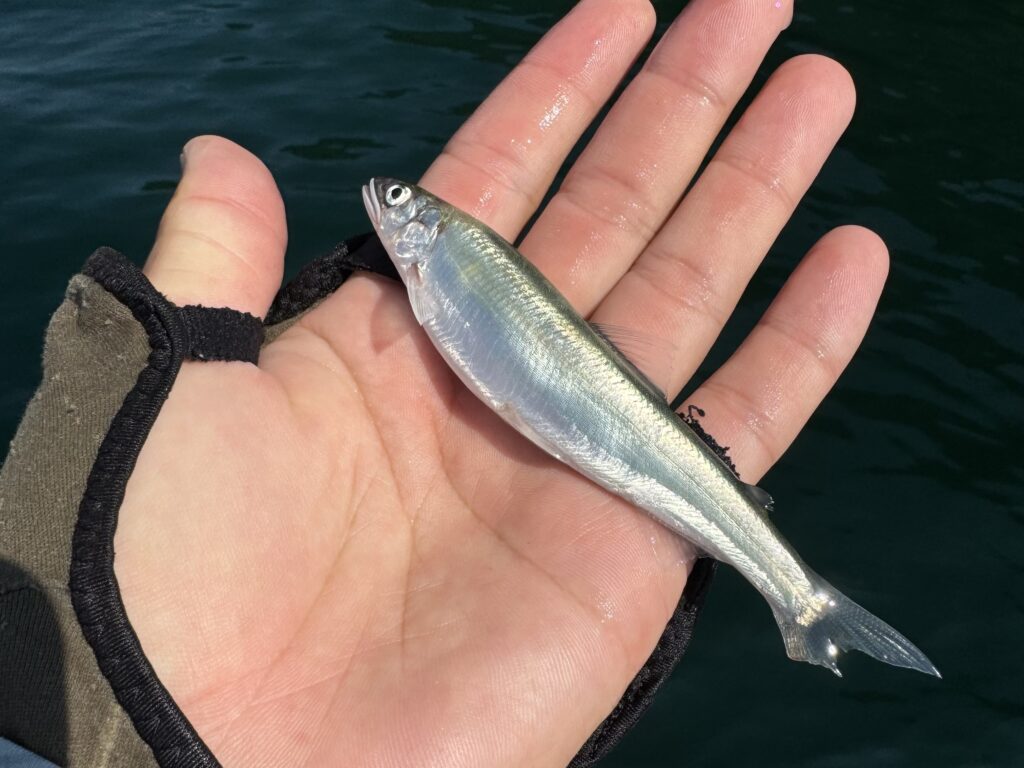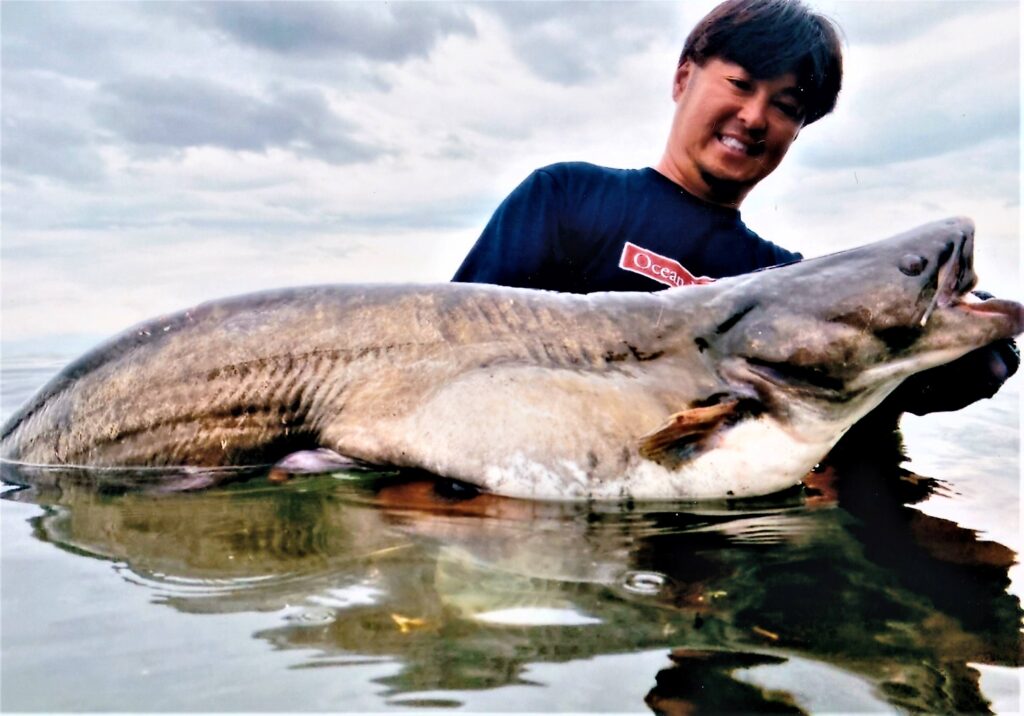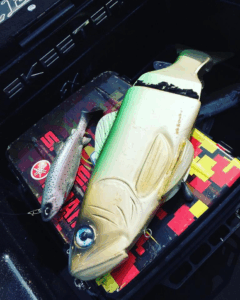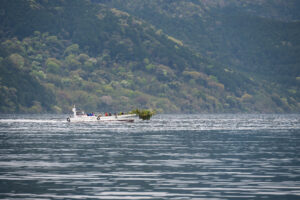Few places in the world can rival Lake Biwa near Kyoto city. Japan’s largest and most legendary freshwater lake.
It’s where global anglers come chasing giants, where techniques are born, and where nature still feels wild.
From monster largemouth bass to beautiful native Biwa Salmon, here are the four most iconic fish you can encounter in this extraordinary lake.

1. Largemouth Bass (The most popular target)
Scientific name: Micropterus salmoides
Origin: North America
Status: Introduced species, now naturalized in Lake Biwa
Lake Biwa is internationally known as the center of bass fishing in Japan.
Just one hour from Kyoto or Osaka, this massive lake attracts anglers from all over the world — many hoping to catch a true trophy bass.
Because of its accessibility and the size of its fish, Lake Biwa has become one of Japan’s most high-pressure fishing fields, where thousands of anglers experiment daily to fool these intelligent bass.
Out of this environment, unique fishing techniques evolved —
especially the Mid-Strolling technique, developed using soft jerkbaits like the Sakamata Shad.
Born in Lake Biwa, it’s now a global trend, used by pros in Bassmaster Elite Series tournaments across the U.S.

To learn more about the history of largemouth bass in Japan, please read this article.
2. Biwa Salmon (Fish that are fun to catch and eat)
Scientific name: Oncorhynchus masou rhodurus
Status: Endemic species (found only in Lake Biwa)
The Biwa Salmon is a rare, endemic salmonid found only in Lake Biwa.
It inhabits the cold, deep northern waters of Lake Biwa.
During its juvenile stage, the Biwa Trout feeds mainly on aquatic insects and terrestrial bugs that fall onto the water’s surface.
As it matures, its diet shifts to Ayu (sweetfish), Isaza goby, freshwater shrimp, and Anandale amphipods — small but energy-rich prey that thrive in Biwa’s ecosystem.
Especially in its prime season, adult Biwa Trout feed heavily on fat-rich Ayu, which gives their meat a distinctly rich and buttery flavor prized by locals.Between October and November, it migrates upstream into rivers to spawn — a remarkable natural spectacle.
There are two primary fishing methods used to catch Biwa Salmon:
- Trolling with Red Core Line, a weighted line technique using two types of spoons.
- Vertical Jigging with Metal Jigs, targeting Biwa Salmon suspended in deep water.
Because they are sensitive and protected, Biwa Salmon are usually fished with licensed local guides.
Their silvery bodies and delicate flavor make them both a sporting trophy and a culinary treasure of Shiga.

Learn about fishing licenses in Japan
3. Ko-Ayu (Traditional Japanese fish)
Scientific name: Plecoglossus altivelis
Status: Native species
Ko-Ayu are small Ayu(sweetfish) that live their entire lives within Lake Biwa.
The fishing season runs from April to August, peaking between May and July.
During this period, families and local anglers crowd the lake shores, eagerly fishing for tonight’s dinner.
The typical setup includes a long pole without a reel, chum, and sabiki rigs —
a simple, traditional method passed down for generations.
Interestingly, Ko-Ayu remain small even as adults because they mistake the lake for the sea and never migrate upstream.
Ko-Ayu are also a beloved local delicacy, enjoyed fried, grilled, or simmered.
This silvery fish symbolizes the bond between Lake Biwa’s ecosystem and the people who live beside it.

4. Lake Biwa Giant Catfish (The largest fish in Lake Biwa)
Scientific name: Silurus biwaensis
Status: Endemic species
The Lake Biwa Giant Catfish is one of Japan’s true monster fish — found only in Lake Biwa.
It grows over 1 meter (3.3 ft) long and can weigh up to 20 kg (44 lbs).
In recent years, some anglers have begun targeting it specifically, turning it into a niche yet thrilling pursuit.
Catching one, however, is no simple task. It requires local knowledge, endless patience, and a deep connection with the lake.
Most successful catches come on topwater plugs and vibration lures, usually at night.
It’s also known as one of Japan’s Three Monster Fish, alongside the Ito of Hokkaido and the Akame of Kochi.
This massive, mysterious fish has long been part of local folklore — often called “the guardian of Lake Biwa.”

The image is from JGFA official website
https://www.jgfa.or.jp/
Conclusion
Lake Biwa is home to far more than just these four iconic species —
it’s an ecosystem filled with countless forms of life, including many fish found nowhere else on Earth.
Each species reflects the lake’s unique environment, evolving over centuries in its vast, dynamic waters.
For anglers around the world, discovering the beauty and mystery of Lake Biwa’s fish is more than a fishing trip — it’s a journey into Japan’s natural heritage.
At Japan Bass Fishing Agent, we offer professional bass fishing guide tours on Lake Biwa, Lake Kawaguchi, Lake Nanairo, and Lake Ikehara,
helping international travelers experience the thrill of fishing in Japan’s most extraordinary waters.
All gear included • Kyoto & Osaka pickup
You Tube Channel
※Please click this image and enter our YouTube channel




